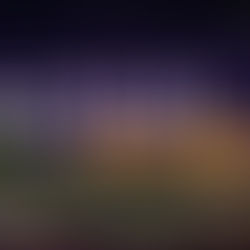Izumo in Despair | Golden Sun | Orchestral Cover
Enjoy this ethnic-orchestral arrangement of Izumo's first theme from Golden Sun!
Feel free to check out the landing page with links to the recording, sheet music and more!
If you are one of my Patrons, you can now find the MIDI, XML and SIB files I created for this arrangement now available to download from Patreon!
Arranger's Note:
"In Golden Sun, various real-world locations served as the inspiration for various in-game locations. For Izumo, the real-world equivalent would be Japan as it resides on the eastern edge of the world map and with similarly shaped islands.
When we initially arrive, Izumo is in despair after the nearby Serpent-Dragon (residing in Gaia Rock) awoke, likely as a result of Mt. Aleph erupting at the beginning of the series. The Serpent demands a female sacrifice each year, and this year's sacrifice falls to Kushinada (the character in the thumbnail). Susa, the fiancé of Kushinada, will not stand for this, and ventures to Gaia Rock to slay the serpent himself.
The name "Kushinada" itself stems from the Japanese legend of the same name, where a woman is similarly rescued from the clutches of a Serpent by the God "Susano-o" who then marries her.
So with such an obvious connection to Japan, how does Sakuraba treat the music to accompany this story?
We open with an ambiguous chord; a minor 7th chord with a suspended 4th (E-A-B-D). This chord serves as the tonal anchor of the track, appearing for the vast majority of it. The lack of the 3rd (here, the G), suggests a pentatonic foundation (using only 5 notes; here, E-F-A-B-D) - a particularly Eastern musical trait. And indeed, those are the only 5 notes that are used in the entire track.
To complement the Eastern aesthetic, I replaced the hi-hat with Japanese taiko stick hits, as well as suzu bells (similar to sleigh bells), which are often used for good luck and to ward off spirits. The melody falls to the Shakuhachi - a Japanese flute.
The harmony remains relatively static until 0:20, where the bass shifts upwards a semitone to F, forming a quasi-Lydian / Phrygian chord of F-A-B-D (Lydian due to the sharpened 4th (B); or Phrygian due to the flattened 2nd (F)). Oscillating between these two chords (E-A-B-D & F-A-B-D) remains the sole harmonic interest for this track... but that's all it needs to convey such a despairing emotion!
By 0:38, we progress to a new section. Here, a koto zither instrument is added to enhance the Eastern focus (originally this was some sort of low vibraphone / celesta). Additionally, a shō (mouth organ) is added, oscillating between these two chords once more with a gentle fade. And finally, I also added some mystical gong and singing bowl strikes to add a touch of meditative spirituality.
The Shakuhachis return for the final section (0:53), as we oscillate once more between the two chords before looping. Relatively simple material.
To finish, I wrote a brief concluding statement to give a definite end to the track (2:10)."

































Comments